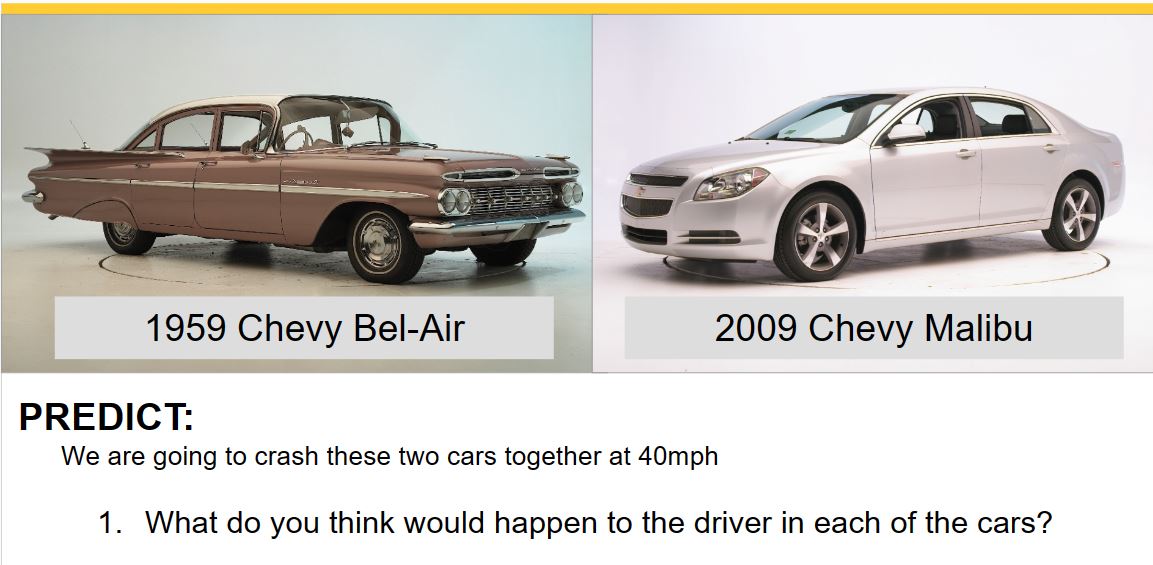Question of the unit: How does momentum relate to how car safety is designed? And how is it conserved?
There are three key concepts in this unit: What is momentum? The Impulse-momentum theorem, and conservation of momentum.
Each concept was broken down into a week long concept.

Reflection:
Video/Demonstration of the egg drop project.
This unit was in some ways, a day and night difference from how I planned for my Forces unit. Due to the many types of forces, there are and trying to maintain a relatively strict planning schedule, I think I found myself acting more like a content delivery style of teaching than focusing on mastery of content, or even activity-based style of teaching. While the momentum unit was significantly less spread out, this could be summed up into three parts: momentum, impulse, and conservation of momentum so it allowed me to spend 2-3 days or even a week on each individual moment or formula unlike the forces unit where it was almost a new formula every day which led to no specific lesson having much substance to it. Focusing on this unit, I had aimed to dedicate more to a general concept instead of bouncing around so much, I decided to have a week being focused onto one of the three concepts mentioned above. I also aimed to have each week wrap up in a specific type of lab or activity with possible connections to the previous one. I had the students see how momentum (and indirectly, impulse) play a key role in how modern cars are designed to keep us safe. While creating groups, there were some issues which showed up. Due to period 6 not having a long block, I split it between two days. I used the time between both days quite well to reflect and adjust. Immediately, I allowed students to choose their own groups under the “condition” that they wrote down their groups on a small slip of paper, and then provided some visuals using google shapes in hopes of transmitting that information as best as possible. Those small changes ended up provided a large difference in terms of how the students experienced the lab activity.
This unit was also the start of my growth as a teacher where I began experimenting new styles and more.